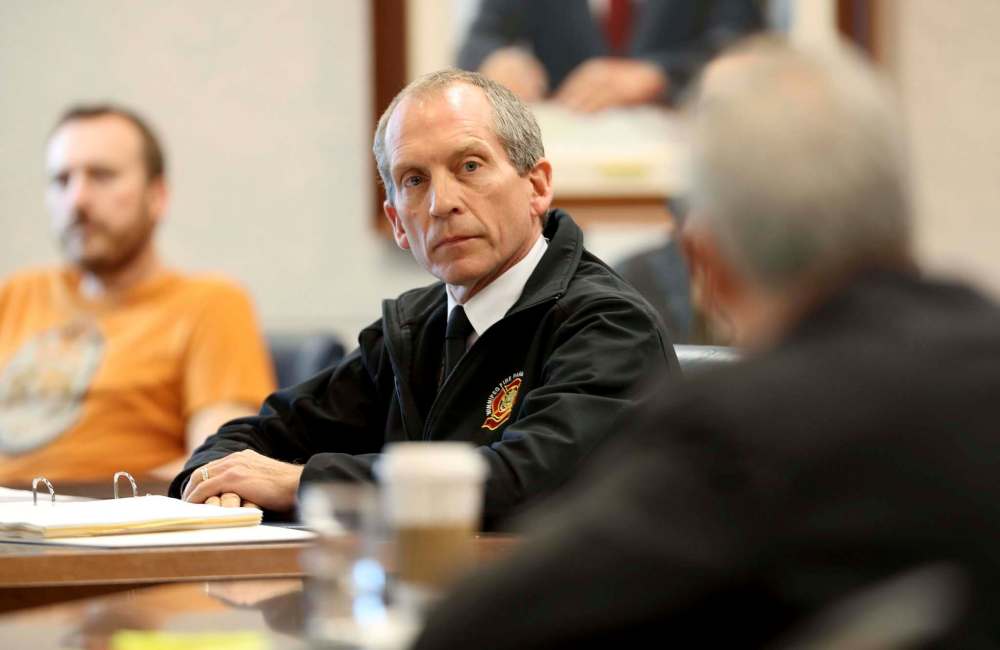Time to extinguish fire/paramedic feud
Advertisement
Read this article for free:
or
Already have an account? Log in here »
To continue reading, please subscribe:
Monthly Digital Subscription
$0 for the first 4 weeks*
- Enjoy unlimited reading on winnipegfreepress.com
- Read the E-Edition, our digital replica newspaper
- Access News Break, our award-winning app
- Play interactive puzzles
*No charge for 4 weeks then price increases to the regular rate of $19.00 plus GST every four weeks. Offer available to new and qualified returning subscribers only. Cancel any time.
Monthly Digital Subscription
$4.75/week*
- Enjoy unlimited reading on winnipegfreepress.com
- Read the E-Edition, our digital replica newspaper
- Access News Break, our award-winning app
- Play interactive puzzles
*Billed as $19 plus GST every four weeks. Cancel any time.
To continue reading, please subscribe:
Add Free Press access to your Brandon Sun subscription for only an additional
$1 for the first 4 weeks*
*Your next subscription payment will increase by $1.00 and you will be charged $16.99 plus GST for four weeks. After four weeks, your payment will increase to $23.99 plus GST every four weeks.
Read unlimited articles for free today:
or
Already have an account? Log in here »
Hey there, time traveller!
This article was published 04/01/2018 (2896 days ago), so information in it may no longer be current.
City councillors aren’t required to enter burning buildings to fight fires, or rush to vehicle crashes to save the lives of victims. But it is the responsibility of council to direct administration to improve an emergency response system that seems hindered by duplication of duties, turf disputes and unnecessarily high expenses.
When Winnipeg firefighters and paramedics merged in 1997 into the Winnipeg Fire Paramedic Service, the combined service was supposed to be more efficient and cost-effective. That vision is not the reality.
On an average day in Winnipeg, there are more than 100 calls in which both a fire truck and an ambulance race to the rescue. Most of these calls are as minor as a cyclist falling off his bike or a pedestrian collapsing on a sidewalk, yet such calls typically garner both a fire truck and an ambulance, each well-staffed by highly-paid professionals.

A recent Free Press investigation found no large city in Canada involves firefighters in emergency medical response to the extent that Winnipeg does. It makes Winnipeg’s 862 firefighters appear busy at a time when the number of fires has declined by almost half in recent years, presumably in large part because autobins were phased out and, encouragingly, because arson protection programs are working. Fires currently make up less than three per cent of the workload of Winnipeg firefighters.
Unfortunately, administrators of the WFPS can’t be counted on to remedy the duplication of services on their own. Problems within the system include long-simmering animosity between Fire Paramedic Chief John Lane and the paramedics union. Their dirty laundry was aired in public recently during an arbitration hearing into paramedics’ complaints about a brochure promoting the chief’s presentation at an international firefighters conference, which included this observation: “This fire-based model is continuously threatened by single-role EMS providers and misinformed leaders …”
The overlap between firefighters and ambulance paramedics is becoming increasingly unaffordable. The province has frozen ambulance paramedic funding to the city at 2016 levels and the fire paramedic service’s overall budget has been reduced in the new year to $193.5 million from $199.2 million.
These financial constraints should force the city to explore less expensive ways to maintain the high quality of emergency services it needs.
One possibility is to champion community paramedicine, which was introduced in a successful pilot project called Emergency Paramedics in the Community that worked with frequent callers of 911 to address the health and social reasons behind their heavy usage of emergency services.
A second option is to reconsider the staffing of “squad vans,” which are used on many medical calls because they’re smaller than fire trucks. The new vans have no firefighting capabilities but are staffed by a firefighter primary care paramedic and high-salaried fire lieutenant. Perhaps they could be staffed by less costly ambulance paramedics.
The city has commissioned two separate reports on the issue. The Fire Underwriters Survey will assess the status of the city’s firefighting capability and recommend improvements. And the U.S.-based firm Emergency Services Consulting International is assessing fire risk and medical calls in the city.
Information from those reports should help the city envision an ideal fire-paramedic service and make changes toward that ideal. The needs of patients and taxpayers should be the paramount priority. A much less pressing concern should be the us-versus-them lobbying of separate unions that represent firefighters and ambulance paramedics.



